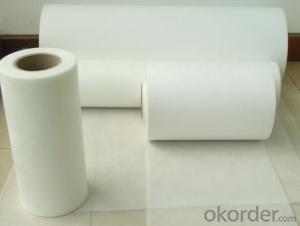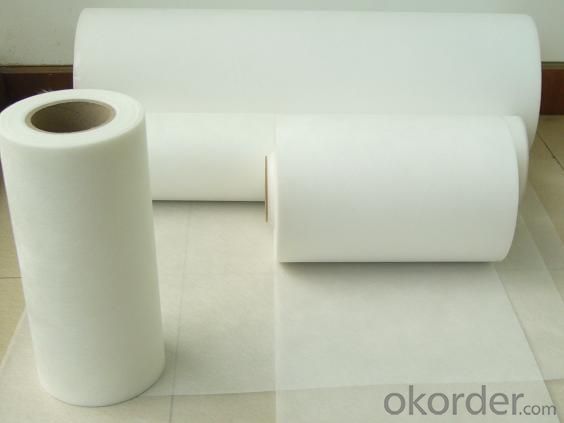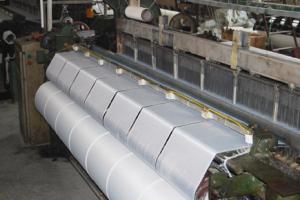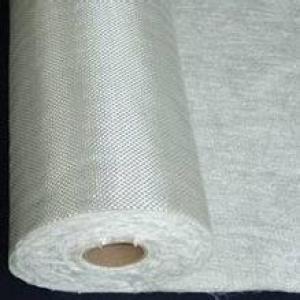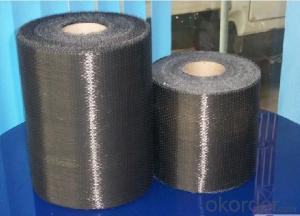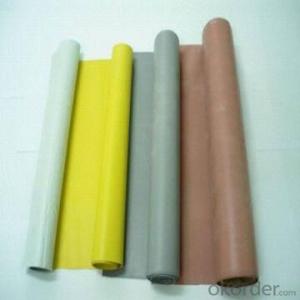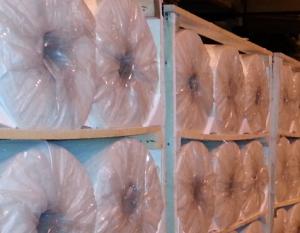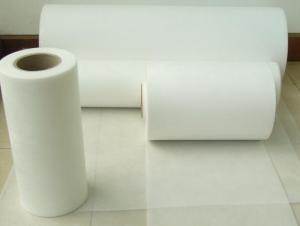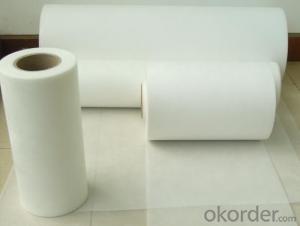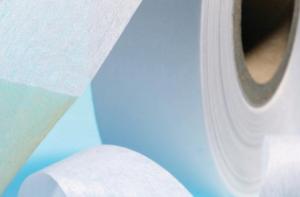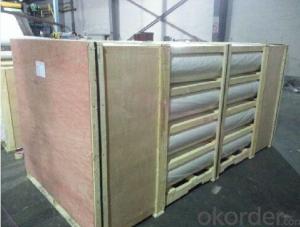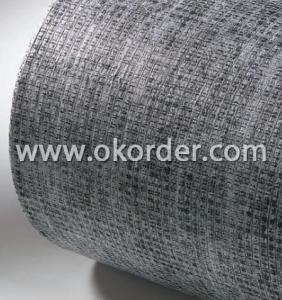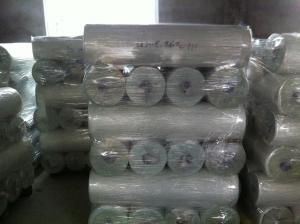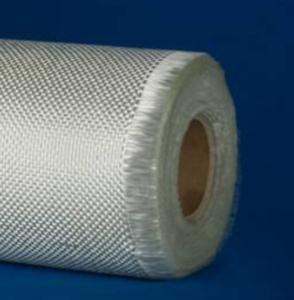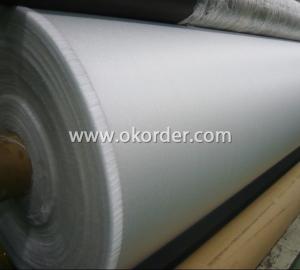Fiberglass Fabrics Surfacing Tissue Mat
- Loading Port:
- China Main Port
- Payment Terms:
- TT or LC
- Min Order Qty:
- 72000 m²
- Supply Capability:
- 1440000M2 Per Month m²/month
OKorder Service Pledge
OKorder Financial Service
You Might Also Like
1.Brief Introduction1.Brief Introduction
Surfacing Tissue mainly used in the surface layers of FRP products. It features even Fiber distribution, soft feel, level and smooth fiber surface, less glue content, quick resin soak and good pattern fitness. It can improve the product surface property on corrosion resistance, compressive strength, seepage resistance, and longer service life. It is also suitable for spraying; pattern pressing and other FRP pattern technology.
2.Characteristics
Fast breakdown in styrene
Fiber dispersed evenly
Low binder content
Superior acid corrosion resistance
3.Specifications
Item | Unit | Specification |
Area Weight | g/m2 | 30+/-3 |
Binder Content | % | 6-9 |
Tensile Strength MD | N/125px | ≥35 |
Soaking time | S | ≤10 |
Moisture content | % | ≤0.5 |
Width length
| mm
| 1270
|
Roll Diameter
| m | 300
|
Paper Core Internal Dia | mm | 76 |
Special specification can be produce according to customer requirements.
4.FAQ
a.Pacage
Each Surface Tissue is wound onto a paper tube which has an inside diameter of 76mm and the mat roll has a diameter of 330mm. The mat roll is wrapped up with plastic film,and then packed in a cardboard box or wrapped up with kraft paper. The rolls can be vertically or horizontally placed. For transportation, the rolls can be loaded into a cantainer directly or on pallets.
b.Product storage:
Unless otherwise specified, Chopped Strand Mat should be stored in a dry, cool and rain-proof area. It is recommended that the room temperature and humidity should be always maintained at 15℃~35℃ and 50%~75% respectively.
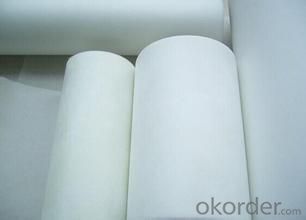
- Q: Can fiberglass fabric be used for making carpet backing?
- Yes, fiberglass fabric can be used for making carpet backing. It is a commonly used material due to its durability, strength, and resistance to moisture. Fiberglass fabric provides stability and reinforcement to the carpet, making it suitable for high traffic areas.
- Q: Is fiberglass fabric recyclable?
- Yes, fiberglass fabric is recyclable. Fiberglass is made from thin strands of glass that are woven together to create a fabric. While it is not biodegradable, it can be recycled by melting it down and reusing it in the manufacturing of new fiberglass products. The recycling process involves grinding or shredding the fabric into small pieces, then heating it to high temperatures to melt the glass fibers. The molten glass is then shaped into new products or used as filler material. Recycling fiberglass fabric helps reduce waste and conserves resources, making it an environmentally friendly option.
- Q: Can fiberglass fabrics be used for sports or recreational equipment?
- Sports and recreational equipment can indeed utilize fiberglass fabrics. Known for its exceptional strength and durability, fiberglass proves to be an ideal material for a diverse range of applications in these fields. It finds extensive use in crafting items such as kayaks, canoes, surfboards, skateboards, and even sporting goods like hockey sticks and golf club shafts. Moreover, the lightweight nature of fiberglass adds to its popularity, enabling improved maneuverability and enhanced performance. The flexibility of fiberglass fabrics further allows for molding them into various shapes and sizes, providing immense versatility in the design of sports and recreational equipment. Overall, fiberglass fabrics stand as a highly dependable and extensively employed material in the manufacturing of sports and recreational equipment.
- Q: Can fiberglass fabric be used for insulation in steam systems?
- Fiberglass fabric is indeed suitable as insulation in steam systems. Its exceptional thermal insulation properties and ability to withstand high temperatures make it a favored option. By effectively capturing the steam's heat, it prevents any loss of heat and enhances energy efficiency in the system. Moreover, fiberglass fabric's lightweight, flexible, and effortless installation process make it a convenient choice for insulating steam pipes and equipment. Its non-combustible nature also ensures safety in steam systems. All in all, fiberglass fabric is a dependable and efficient insulation material for steam systems.
- Q: Is fiberglass fabric resistant to chemicals in industrial settings?
- Yes, fiberglass fabric is generally resistant to chemicals in industrial settings. Its non-reactive nature and strong resistance to corrosion and degradation make it a suitable material for protecting against chemical exposure in various industrial applications.
- Q: Directions for use of polyester fiberglass fabrics
- We must be careful in handling polyester fiber cloth. If the cloth roll to drop down from the vehicle, will damage the polyester fiber, resulting in practical problems.That if there is a fringe installation, in any direction on the pavement is greater than 2.5 cm stripes must be cut and stacked together, and the hand will overlap in the asphalt layer. At the immersion in polyester fiber cloth must use roller or brush, to ensure that it is with the road full contact and remove bubbles. The width of hot asphalt must be coated polyester fiber cloth width plus 4 inches. The polyester fiber cloth to curve surface is not easy to bend or stretch. The installation on the surface can be truncated cloth, can be mechanically or manually installed.For the polyester fiber cloth can be used when installing a tractor or truck drag with metal roller mechanism, the metal roller is to ensure the preparation of polyester glass fiber cloth spread on the road. In the installation and must be installed behind a row of brush, which will be pressed in the polyester fiber asphalt coating. We must ensure that in the length direction a 5.1 cm composite layer joint polyester fiber cloth in the width direction in a layer 10.2 cm. Lateral joint top must be along the pavement, all joints must be lapped together.
- Q: How does fiberglass fabric perform in tensile strength?
- Fiberglass fabric is known for its excellent tensile strength performance. Tensile strength refers to the ability of a material to resist breaking or deforming under tension. In this regard, fiberglass fabric performs exceptionally well. The strength of fiberglass fabric is attributed to its composition, which consists of fine glass fibers woven together to create a strong and durable material. These glass fibers are known for their high tensile strength, making fiberglass fabric ideal for applications that require resistance to pulling forces. Fiberglass fabric exhibits a high tensile strength-to-weight ratio, meaning it can withstand significant amounts of tension without adding excessive weight to the structure. This property is particularly advantageous in industries such as aerospace, automotive, construction, and marine, where lightweight yet strong materials are essential. Moreover, fiberglass fabric's tensile strength remains relatively consistent even when exposed to harsh environmental conditions, such as extreme temperatures, moisture, and chemicals. This makes it a reliable choice for applications that demand stability and longevity. It is worth noting that the tensile strength of fiberglass fabric can vary depending on the specific manufacturing process and the type of glass fibers used. However, in general, fiberglass fabric is renowned for its outstanding tensile strength performance, making it a preferred choice in numerous industries and applications.
- Q: How is fiberglass fabric used in the production of thermal curtains?
- Fiberglass fabric is commonly used in the production of thermal curtains due to its unique properties and benefits. Firstly, fiberglass fabric is known for its excellent insulating properties, which makes it a perfect material for thermal curtains. The fabric acts as a barrier against heat transfer, helping to maintain a stable temperature inside a room. In the production of thermal curtains, fiberglass fabric is often used as a lining or an interlining. It is sandwiched between the decorative outer fabric and the inner lining of the curtain. This layer of fiberglass fabric adds an extra layer of insulation, preventing heat loss in the winter and heat gain in the summer. Additionally, fiberglass fabric is lightweight and flexible, making it easy to work with during the manufacturing process. It can be easily cut, sewn, and tailored to fit various curtain sizes and designs. Moreover, fiberglass fabric is durable and long-lasting, ensuring that thermal curtains made from this material will withstand frequent use and maintain their insulating properties over time. Furthermore, fiberglass fabric is fire-resistant, adding an extra layer of safety to thermal curtains. This property is crucial in preventing the spread of fire and protecting occupants in case of an emergency. Overall, fiberglass fabric is an essential component in the production of thermal curtains. Its insulating, lightweight, flexible, durable, and fire-resistant properties make it an ideal choice for creating curtains that effectively regulate temperature, conserve energy, and enhance comfort in homes and commercial spaces.
- Q: How is fiberglass fabric tested for quality assurance?
- To ensure the quality and performance of fiberglass fabric, rigorous testing is carried out using various methods during the quality assurance process. The tensile strength test is one of the primary tests conducted on fiberglass fabric. This test determines the fabric's ability to resist forces that attempt to pull it apart. Tensile testing machines apply controlled loads to the fabric until it breaks, allowing for the determination of its maximum tensile strength. This test is crucial for assessing the fabric's durability and suitability for applications that involve high stress or load-bearing requirements. Another important test is the tear strength test, which measures the fabric's resistance to tearing or propagating a tear. In this test, a sample of the fiberglass fabric is gradually torn apart by a constant force. The force required to tear the fabric provides insight into its toughness and ability to withstand tearing forces. This is particularly important in applications where the fabric may come into contact with sharp objects or abrasive conditions. Dimensional stability is also evaluated by subjecting the fiberglass fabric to extreme temperature variations and measuring its ability to maintain its shape and size. This test ensures that the fabric can withstand environmental conditions without shrinking or expanding. It is particularly crucial for applications that involve temperature fluctuations. In addition, fiberglass fabric undergoes tests to assess its resistance to chemicals, moisture, and UV radiation. Chemical resistance tests involve exposing the fabric to various chemicals and evaluating its reaction, ensuring its suitability for applications where it may encounter corrosive substances. Moisture resistance tests assess the fabric's ability to repel water and resist mold or mildew growth. UV resistance tests determine the fabric's ability to withstand prolonged exposure to sunlight without experiencing degradation or loss of mechanical properties. Furthermore, the flame resistance of fiberglass fabric is assessed through flame tests. These tests involve exposing the fabric to a controlled flame and measuring its ability to self-extinguish or resist burning. Flame-resistant fiberglass fabric is essential for applications where fire hazards are present, ensuring the safety of individuals and the protection of property. Overall, fiberglass fabric undergoes a comprehensive range of tests to ensure its quality and suitability for various applications. By evaluating properties such as tensile strength, tear strength, dimensional stability, chemical resistance, moisture resistance, UV resistance, and flame resistance, manufacturers can provide high-quality fiberglass fabric that meets the specific requirements of different industries and applications.
- Q: Can fiberglass fabric be used for reinforcement in boat decks?
- Indeed, boat decks can benefit from the use of fiberglass fabric for reinforcement. Renowned for its robustness, longevity, and ability to withstand corrosion, fiberglass fabric proves itself as an ideal material for constructing boats. By incorporating fiberglass fabric, boat decks gain structural integrity, reinforcing their overall strength. Moreover, the lightweight nature of fiberglass fabric offers advantages such as improved buoyancy and enhanced fuel efficiency. Furthermore, its exceptional resistance to water and various weather conditions renders it perfectly suitable for marine environments. In summary, fiberglass fabric remains a favored option for reinforcing boat decks due to its strength, durability, resistance to corrosion, and lightweight attributes.
Send your message to us
Fiberglass Fabrics Surfacing Tissue Mat
- Loading Port:
- China Main Port
- Payment Terms:
- TT or LC
- Min Order Qty:
- 72000 m²
- Supply Capability:
- 1440000M2 Per Month m²/month
OKorder Service Pledge
OKorder Financial Service
Similar products
Hot products
Hot Searches
Related keywords
